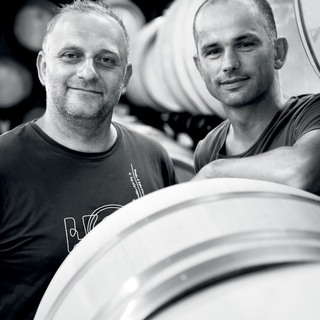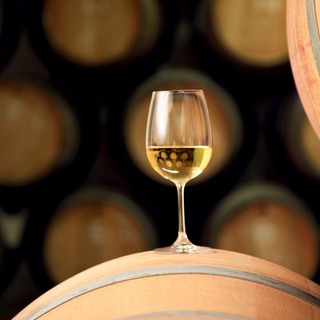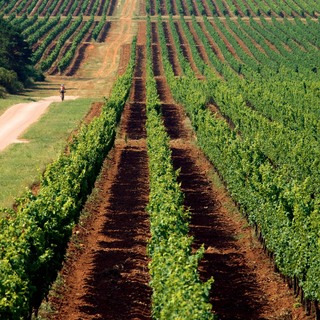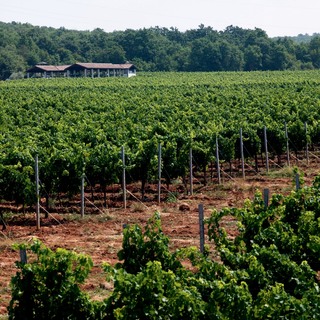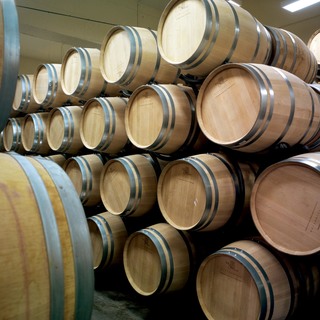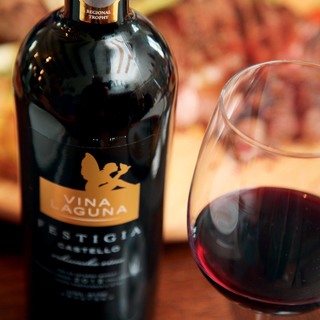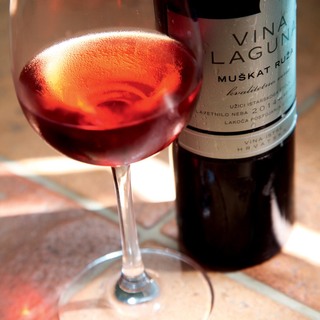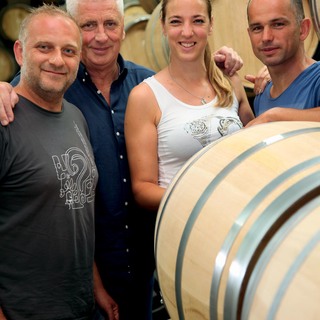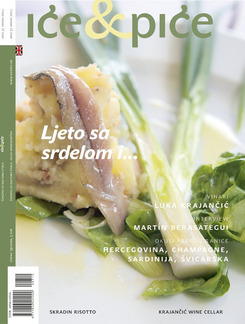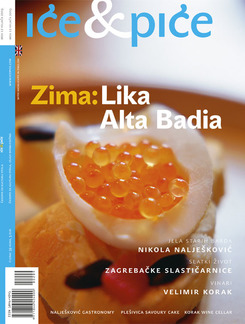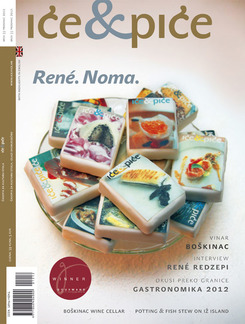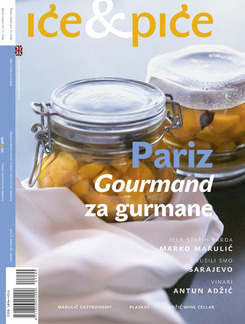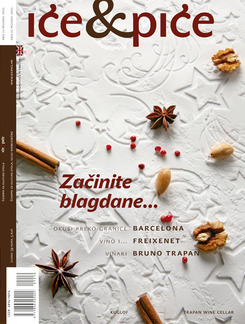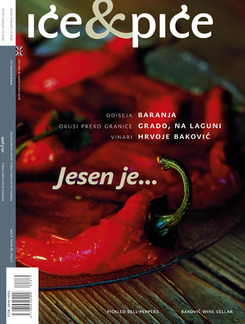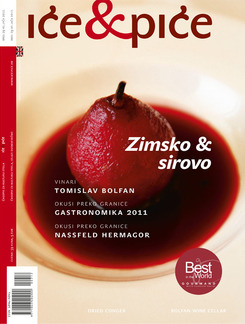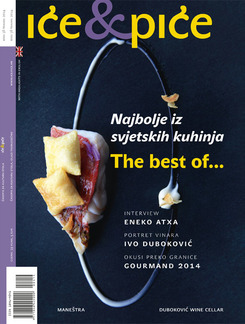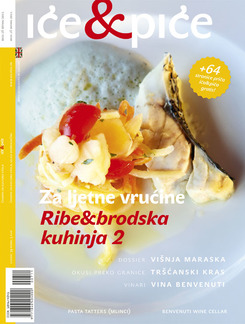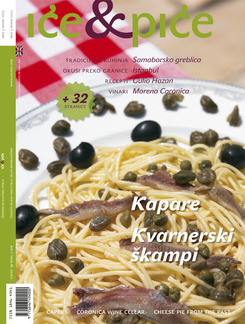Wine cellar’s ID
History
Continuous production of wine in Poreč in a single place was started by the consolidation of a number of cooperative cellars into the large Cantina Sociale in Poreč in 1934 (the old coat of arms of Laguna Vina featured this year). The Italian government created Cantina Sociale, the first cooperative cellar, looking to the graduates of the nearby agricultural school set up during the Austro-Hungarian Empire, now Poreč’s Institute for Agriculture and Tourism. In the mid 1960s, Laguna Wines (vina) became a part of the large agricultural and tourist system called Plava Laguna (Blue Lagoon), and produced a number of agricultural and food products for the hotels in the system. They had vineyards, olive groves, hazel nut plantations, pears, peaches, vegetables, cereals, a mill and a bakery. In the former Yugoslavia, Agrolaguna was one of the biggest wineries, with 400 to 500 hectares under vines, and the ability to purchase many more locally from subcontractors. But the basis for production has always been Poreč Malvazija In 2004, Laguna was taken over by Agrokor, with its then circa 300 hectares of vineyard. Up to 2012, 450 hectares of new vineyard were planted. So far a lot has been invested (more than 30 million euros) in modernising the cellar (built in 1979 to 1978), although at the time of construction was one of the most modern in Europe. Now Agrolaguna has more than 600 hectares under grapes. Conversion of the old into young vineyards is still being worked on. The plan for the next two years is to plant another 80 hectares of Istrian Malvazija.
Assortment
As well as the basic cultivars, there were many others in the vineyard. When the cellar was being built, Ante Gavranić, now in retirement, was appointed oenologist. He loved trying various new varieties. Then they had Muscat Ottonel, a lot more Borgonja (Gamay), and local North Italian varieties such as verduzza. At the moment there are 23 varieties. One part of the vineyard is devoted to pilot projects of different varieties, 3–5 hectares being given to a variety. At the moment an area 230 ha, or 70% of the land, is given over to Malvazija, 100 ha to Merlot and another 100 to Cabernet, while 35 hectares bear Teran. In 2012, interestingly enough, Agrolaguna (according to the Croatian Viticulture and Viniculture Institute) accounted for 28% of all Teran produced in Croatia. Today’s oenologists, Milan Budinski and Miroslav Lata, who have been 5 and 10 years respectively in Agrolaguna say: We were the hardest hit by the story of the name Teran, but it eventually drove us to produce sparkling wine from the Teran grape, which was sold the very first year it was on the shelves in more than 20,000 bottles, in Istria alone. On the market there was a place for it, a need and a desire. Since Teran has got very marked regional characteristics, such as high acidity, aromatic green notes, being a robust and highly local variety, it is most highly valued in the region, seldom anywhere outside. We wanted to reconstruct a red that was called Teran and produced in Istria, but coupages were being made with other red sorts that softened it and weakened its particular characteristics. The other project from the Teran crisis was Terra Rossa – a wine that became pretty important to us and that we wanted to create a wave of Istrian regional reds for, reds that had been lost.
Malvazija
Milan says that Malvazija is an Istrian regional wine that, for good or evil, bears the name of the variety. The name Poreč Malvazija had appellation controlée in Yugoslavia. The system of geographical protection in Yugoslavia was very similar to the system of the Old World that we can find in Italy and France, related to variety and region. From this point of view, Malvazija was more of a wine and less of a variety. At the beginning of the 90s this system collapsed. Now we have a protection system that protects and sells varieties, not regions. Seems we have got shy of calling it Poreč Malvazija. But why not? The only wine that has kept this historical system of protection in Croatia is Dingac, which is not about the variety. When you are protecting a variety without the name of the region, in fact you’re building up brand for someone else.
I think that the whole philosophy of the firm inheres in the positioning of the product. The attitude of the firm was for us to recognise what the regional wine Istrian Malvazija was like, and for us to define it clearly. Now it’s patent what the basic line has to be like. This was the most essential part of the whole story. Through this clear vision of ours, the whole production of the region was defined. We saw that the crucial Istrian wineries began to follow the trend. If we go across the Slovene border, there we’ll find very aromatic kinds of Malvazija that are more like Sauvignon, or else are macerated. There isn’t anything in between, which Istrian Malvazija now is. This regional identifiability is just so important. It’s the best definition of a product.
In 2011 Agrolaguna became a member of Vinistra.
Distinctly istrian international black grapes
The oenologists say to us: The basic three international red varieties we have in order of importance are Cabernet Sauvignon, Merlot and Syrah. Istria has a special climate: it’s temperate and fresh yet Mediterranean. There is a big difference between day and night-time temperatures. Daily temperatures are ideal for ripening almost all the varieties. Here in Poreč it is perfectly suited for Merlot, it’s perhaps a bit too hot for Syrah, and Cabernet Sauvignon is right on the border, and every year there’s a battle to see it ripens properly. When it does, it’s phenomenal, because it ripens slowly. We always pick Syrah in plus or minus 5 days, Merlot plus or minus 7 and Cabernet plus or minus 15 to 21 days (end of September, first ten days in October), for at that time of the year there are always perfect and modern conditions for ripening. Anything that needs more warmth than Merlot or Syrah won’t work here in Istria, except in the warmest of years, and then right in the south.
Philosophy
Milan Budinsky and Miroslav Latal are unanimous: It might seem that with so much land we are not likely to have very high quality. But our philosophy is just the opposite. We have a lot of vineyards and wines and just because of this we have high quality because we have control over everything. Last year might have sent anyone with a small vineyard under. We have Malvazija at several locations and we shall always find something good. The point really is, who is producing the grapes? If you get bad quality grapes, you can’t make good wine. When the vineyards were constructed and when the first serious vintage was carried out in 2010, we found ourselves in the situation of having free hands and the task of creating a product we had not earlier had. It was up to us to think up what the new product was going to be like. In Istria today there is more than 50% of the Malvazija with appellation from Agrolaguna.
Export
For Agrolaguna, the interesting markets are Poland, Czech Republic, Germany, this region, mainly Serbia, i.e. Belgrade, and England, the opinion maker where you have to be in evidence to get into other markets. Germany is the biggest and strongest importer, but because of the Croatian community (and those of other countries of the former Yugoslavia), which is large, the German market is the one you have to work the least to market as compared with the amounts sold.
Prizes
It is hard even to list the numerous prizes that Vina Laguna have won at international and domestic competitions (for example, the harvest of prizes won at last year’s Vinistra). Accordingly we shall lay stress here only on this year’s success at the Decanter World Wine Awards 2015 in London, where the Castello 2010 won a gold medal and the prestigious title of Regional Trophy. Silvers went to Festigia Malvazija 2013 and Terra Rossa 2013, while bronze medals were garnered by Festigia Merlot 2012 and Festigia Cabernet Sauvignon 2011.
Future
The oenologists speak about their plans: We are in the project for joint-financing from the national wine programme. By 2018 another 77 hectares of vineyard should have been renovated mainly with Malvazija and a little Chardonnay. This year we shall have only 32 hectares of old plantations. By 2018 we shall have 630 to 650 hectares in all the plantations started since 2005, based on Malvazija. There are still some interesting parcels where we would plant Malvazija outside the vine replacement project. We are interested in buying in Malvazija grapes (for half a million litres, 10% of the whole production) and we will be for another three to four years for sure.
We have reduced the product line so as not to fritter our attention away on 15 or so products of only average quality, and we will focus on five products: Malvazija, Cabernet Sauvignon, Merlot, the Terra Rossa coupage and rosé. We have cut out Pinot Blanc, Borgonja, some packages of Cabernet Sauvignon and Merlot. The focus is on 75 cc bottles, and on glass packaging anyway. The things we want to reduce and cut out are in the lower price range, not quality wines. At the beginning we wanted to create quality, but of course it took some time for people to realise this. The basis of our product is the sale of 75 cc bottles, which is very interesting for a big cellar.
